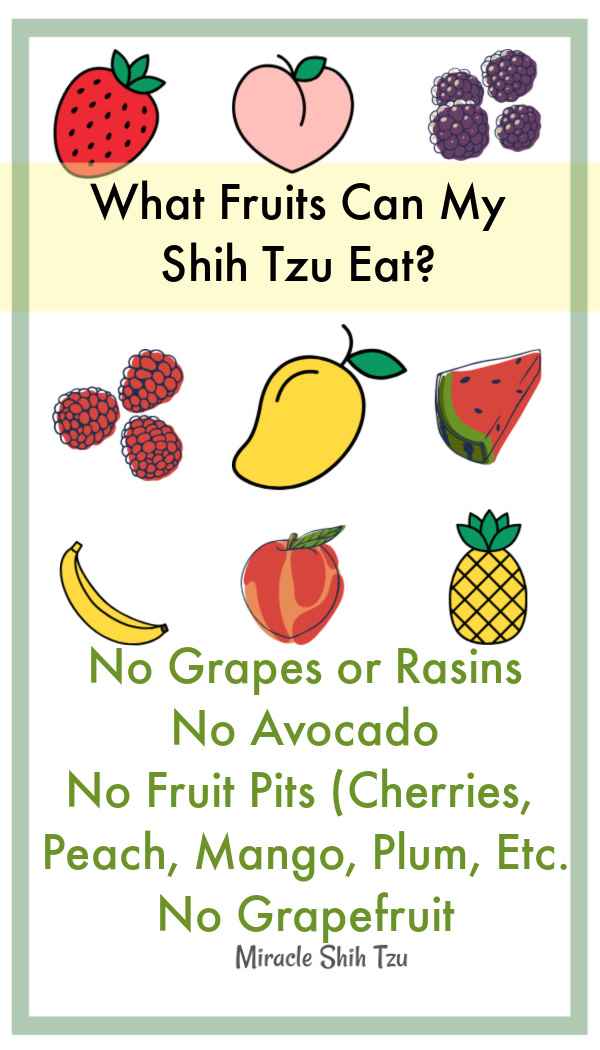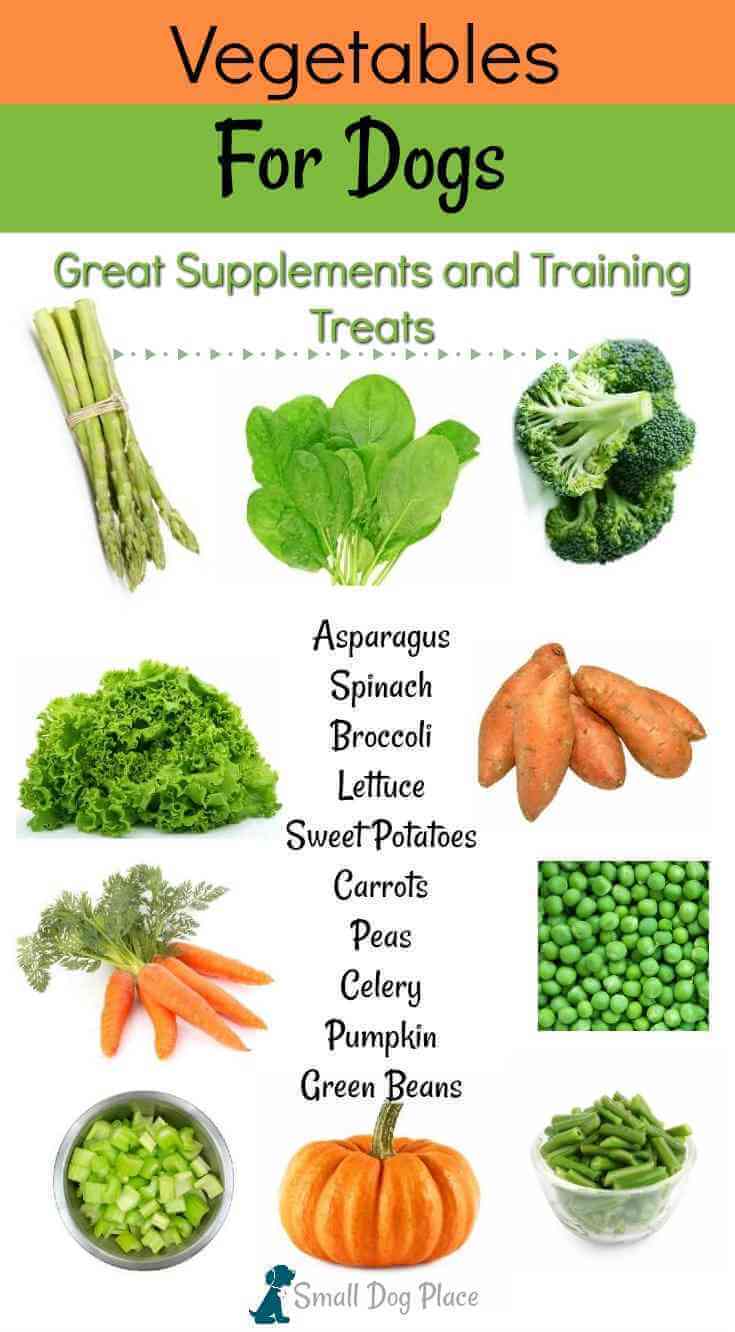Your Guide to Dog Food and Edibles
Best Nutrients for Dogs |Published 08-17-2020
Are you concerned about your dog’s nutrition? Most dog owners who care about their own nutritional needs often begin to wonder if what they are feeding their dogs is as healthy as it should be.
Dog owners need to get concerned about the food they are feeding their dogs! The requirement of food for dogs’ changes with gender, age, body composition, and breed. It also depends on their activity level and temperament. A diet that is rich in valuable nutrients will always be healthy for your dog.
 Best Nutrients for Dogs
Best Nutrients for DogsUnderstanding The Best Nutrients for Dogs: What Nutrients Do Dogs Need?
Just like people, dogs have a need for a variety of nutrients in their diet. They require:
- Proteins
- Fats
- Carbohydrates
- Water
- Vitamins
- Minerals
Proteins
Proteins found in meats, poultry, fish, eggs and some vegetables and fruits are needed to provide a source of amino acids needed to build, repair and replace body protein. They also supply nitrogen which is needed to synthesize nonessential amino acids. As you may know, essential amino acids are those that must be supplied in the diet, where the nonessential amino acids are those that the body can make.
Proteins make up the body’s structures such as hair, skin, nails, tendons, ligaments and cartilage, hormones and others are stored in muscles, liver or even stored as fat in the body.
Fats
Fats or lipids or fatty acids are organized by their chemical composition, You’ve no doubt heard of monounsaturated fatty acits, polyunsaturated fatty acids, triglycerides, fats in the body serves as a source of energy. Essential fatty acids are those needed to be supplied in the diet and include the Omega 3 and Omega 6 fatty acids.
Omega 9 fatty acids can be synthesized or made by the body. For dogs, the diet must contain both omega 3 and 6 fatty acids are essential. Omega 6 oils are found in the best quantities in vegetable oils. Omega 3 fatty acids are found in animal and fish oils.
Carbohydrates
Carbohydrates are needed for energy. In dogs, they are not an essential nutrient but rather provide energy for the essential systems to do their jobs. Many people often think about grains when they consider carbohydrates for dog.
Carbohydrate is one of the three macro nutrients that provide the body energy and help it function (the other two are fat and protein)
Carbohydrates for most people think in terms of Sugar, Starch, and Fiber. These are needed in a dog’s body for energy. Fiber is not considered to be an energy source but it does plays a role in digestion, assuring that the GI tracts runs smoothly.
Why is carbohydrates such a controversy topic? Dog Food Manufacturers use carbohydrates as cheap source of energy and they also provide a long shelf life for dog foods. This not only brings down the price of dog food but also add flavor and in some cases add to the total amount of protein to the food.
Many criticize the use of carbohydrates as a way to add fillers that aren’t nutritional required.
The case for grains
Grains have been undermined as a pet food fixing in light of the fact that the business has utilized them as modest protein fillers. Low-quality vegetable proteins, most ordinarily corn and wheat, are inadequately used by canines. A few canines give off an impression of being allergic to grains, in spite of the fact that the genuine guilty party might be the capacity vermin that pollute grains put away too long that end up in modest pet food.
Be that as it may, grains, when taken care of with meat protein, can be a financially savvy wellspring of calories and vitality for canines. Entire grains, for example, oats, rice, millet, grain, or buckwheat are ideal. They ought to be all around cooked, even soft, and make up under half of the eating regimen. Overweight canines should restrict their grain consumption so as to thin down.
Most home feeders serve a basic morning feast of substantial bones and a mix evening supper. They may blend veggies in with canned fish, curds or eggs instead of meat for more assortments. There are numerous approaches to do it, and what bodes well for you and your canine might be not quite the same as another person.
The amount to take care of is a troublesome inquiry in light of the fact that every creature has an alternate digestion and action level, and caloric necessities can shift by 20%. Start by taking care of indistinguishable number of cups from the current food despite the fact that the dampness levels contrast, and modify up or down as indicated by your creature’s weight the executive’s needs.
Grain Free Foods and Cardiomyopathy
You have likely heard the buzz about grain free dog food causing heart problems. THIS IS NOT TRUE. The FDA statement did not say that grain free diets cause heart problems. What they said was that there may be a link between some grain free diets and canine DCM (Dilated Cardiomyopathy in Dogs). Rather, according to Whole Dog Journal, veterinarians should be alert to signs of DCM in dogs eating foods “containing peas, lentils, other legume seeds, or potatoes as main ingredients.” It’s more about the amount of legumes in the first five ingredients than specific grains.
The best way to look at this is to examine the ingredients on the food label and count the food sources until you get to the first fat source, such as chicken fat. Anything before the fat source is considered to be a main ingredient. Products that list two ingredients as separate but really the same food may be a problem. Whole peas, pea protein, pea fiber may be listed separated but they are all peas.
Water
Water is the most important nutrient in terms of the ability of the body survive. People and dogs can go longer without food than with water but a loss of body water can result in death.
An adult dog’s body is made up of about 50 to 60 percent water. A puppy is about 80% water.
Dogs need clean cool water at all times. Dogs that eat dry food will require more hydration than dogs on a moist diet.
Pregnant and lactating dogs need more water. You need not worry about providing too much water. Dogs will drink what they need.
Vitamins
Vitamins are organic compounds needed by the body in tiny amounts to assist in regular metabolic processes. Each vitamin acts in a different way and all are needed in the food.
Dogs cannot make their own vitamins.
You might see vitamins listed on the list of ingredients using the following names:
Vitamin A: Retinol, Beta carotene: needed for vision and skin
Vitamin D: Calciferol: needed for calcium and phosphorous metabolism
Vitamin E: Tocopherol: needed as an antioxidant and protects the cell from free-radicals
Vitamin K: Naphthoquinone: needed for blood clotting and to enable enzyme activity
Vitamin B1: Thiamine: required by the nervous system where it assists in transmission of sensory impulses
Vitamin B2: Riboflavin: needed for skin and coat health; a deficiency can cause dermatitis around the abdomen
Vitamin B3: Niacin: needed for skin and cell energy
Vitamin B5: Pantothenic Acid: needed for almost all metabolic processes
Vitamin B6: Pyridoxine: required for cell energy; a deficiency can cause skin, nerve, and blood disorders
Vitamin B7: Biotin; involved in breaking down glucose, fatty acids and some amino acids
Vitamin B9: Folic Acid, Folate: used for fast cell multiplication in the fetus and is involved in the synthesis of essential DNA components
Vitamin B12: Cobalamin, Cyanocobalamin: involved in the synthesis of proteins and in the production of red cells1
Minerals
Minerals are inorganic compounds required by the body. Since they cannot be synthesized, they must be provided through the diet.
The body cannot synthesize any of them, so dietary supplementation in proper balance is vital. Some minerals are required in minute amounts called trace minerals.
Examples of trace minerals include: Cobalt, Magnesium, Boron, Copper, Fluoride, Iodine, Iron, Molybdenum, Silicon, Manganese, and Zinc
Others are needed in larger quantities such as calcium, phosphorus, magnesium, sulfur, potassium and sodium.
Calcium is needed for making a strong skeletal structure and supports the transfer of information between cells and sensory impulses.
Phosphorus: The amount of Phosphorus consumed should be balanced with their calcium intake. Both calcium and phosphorous help with bone structure and cell energy. Older dogs need less phosphorous.
Potassium is considered to be a macro mineral because the body needs larger amounts of it for proper functioning. Potassium works in the cells to keep a balance with sodium.
Sodium is often found in food in the form of sodium chloride or basic table salt. The sodium often found in your dog food is basic sodium chloride, or table salt.Sodium phosphates help slow down the formation of tartar that is prominant in dental disease.
Magnesium is a mineral, used in many ways in the dog’s body. It helps build bones, produces energy and necessary for the nervous system.
Zinc is necessary for the dog’s skin and hair as well as in improving reproductive function.
Iron is a trace mineral but still necessary for providing oxygen to organs and muscles.
Manganese helps ensure quality bone and cartilage. It also helps with the mitochondria function, or the cell’s energy source.
Copper helps your dog’s body absorb iron, helps stop anemia and participates in the synthesis of melanin, which gives provides the hair color in the dog.
Iodine, another minor mineral, it still plays a role in the digestive system. It helps with the synthesis of the thyroid hormones involved in metabolism.
Selenium helps fight oxidative stress or aging. This is a trace mineral that acts with vitamin E to protect cell membrane from free radicals.2
Best Nutrients for Dogs
Are some nutrients better for dogs? The simple answer is no, dogs, like people need a variety of foods that contain the six nutrients listed above: Protein, Fats, Carbohydrates, Water, Minerals and Vitamins. The quantities and specific nutrients need by the dog’s body is not exactly what is needed by people. But all must be present in a food to be considered a complete and balanced food.
Who Decides What the Best Nutrients for Dogs Should Be?
There are several worldwide organizations that analyze the scientific literature to find out what is needed for animals. Their recommendations in turn dictate how the dog food manufacturing companies formulate their foods.
The National Research Council (NRC): This committee is made up of academic experts in the fields of companion animal nutrition and define the nutrient requirements for dogs and cats.
The American Association of Feed Control Officials (AAFCO) is made up of experts from the dog food industry and academics and writes the guidelines for the food industry. Most states in the U.S. require compliance with the guidelines.
Fédération of Européenne de L’Industrie des Aliments Pour Animaux Familiers (FEDIAF) The guidelines of this organization represent the best practice in Europe. They provide pet food manufacturers with nutritional recommendations and also provides guidelines for methods to assess nutritional values.
Types of Nutritional Dog Food and Edibles
Are you planning your dog’s food diet? If yes, you need to have the correct balance of water, proteins, vitamins, fats, carbohydrates, oils, and minerals. And most of the pet food available in the market provide you with these.
1. Find a Tasty Dog Food Your Dog Will Love
Dry Kibble
Dry food or kibble is an economical option. Dry dog foods last for a long time, even if you don’t refrigerate it. This food has several benefits. It helps your dog’s teeth to remain healthy, and your dog loves to chew it for minimizing the tartar generation. And when you want to select a particular dry dog food, make sure you assess the ingredients and then purchase.
Canned Foods
If you want a dog food with an increased shelf-life, then this is it! You can find canned dog food easily in the supermarket. However, it might be a tad bit costly. There are dog owners who swear entirely by canned dog food for their furry friends and are willing to pay the price. But you should check the percentage of digestible protein it has. If there are any indigestible proteins, it will move through the dog’s body without being broken into assimilated pieces of nutrients. Hence, the food content is of no use.
The majority of canned dog food has 75% water, which removes the nutrient quality of the food. Make sure you purchase only 100% nutritionally complete canned dog food to avoid nutritional imbalances.
Home-cooked Dog Food
There are dog owners who count on the nutrient value of home-cooked foods. It is essential to feed your dog home-cooked food because that is free from external preservatives.
But the cooking process might be slightly time-consuming. But dog owners who want their furry friends to live healthily and stay agile often opt-in for this choice. You can check with the veterinarian about the food that’s perfect for your pet dog and feed them.
Raw
If you have decided you would like to start feeding your dog raw food, it is essential to follow specific steps when it comes to storing, handling as well as serving this type of food.
There are health concerns you should be worried about for not only your dog but your family members should the raw food contain microorganisms that cause illnesses. Yet it is possible to avoid these situations.
The key focuses to recollect with a crude eating regimen are:
Balance after some time – one dinner could have progressively bone substance, another more meat or organ. The estimated proportion to focus on in general is:
- 80% of meat, ligament, tendons, fat
- 10% palatable bone
- 5% liver
- 5% other organ meat
Meats are high in phosphorus, bones are high in calcium. At the point when meat is taken care of with 10% bone, you have the specific proportions of calcium to phosphorus required by a canine. Entire prey, fish, eggs, and garbage have a fair proportion.
Organ meat ought not to surpass 10% of the eating regimen generally, and 5% of that ought to be liver (hamburger liver has the most exceptional supplement levels). Feed liver once every week (or a few little servings for every week) and attempt to locate a natural source if possible.
If serving pork or salmon be sure to freeze before serving to decrease the danger of parasites.
CBD Dog Treats
Along with the staple dog food, you can opt-in for CBD treats for dogs that come in the form of liquid and chew-able food. These edibles have CBD compound in them, so you need to monitor the use and its purpose. For instance, you can give it to your dog if he has specific health issues or behavioral imbalances. Check the dosage by consulting with your veterinarian and maintain the same.
Other Dog Treats
There is no need to avoid other types of dog treats as long as you take into consideration the calories you are adding to your dog’s daily diet. Dog treats can be broken down into homemade and commercially prepared.
Commercial dog treats can be shaped into any meaty burgers, pork chops or other interesting shapes. These commercial treats should be feed in moderation because man of them are filled with artificial colors and flavors which may not be as nutritious for dogs. Rather, you may be able to offer dog treats that are made from wholesome ingredients that are predominately “human food.” Consider lean meats, fruits and vegetables.
Natural Products Dogs Can Eat
Natural products filled with nutrients, minerals, and cancer prevention agents, and is beneficial for us are also good for our pets. But just because fruits are good for people doesn’t mean that all dogs can eat these same natural products.
While there are numerous natural products fine for canines to eat, a few organic products are harmful and some can be dangerous. For example dogs can’t eat avocados or grapes and the pits of cherries and plums can cause big problems.
Feed Fruit to Dogs?
Here’s your manual for fruity goodness for your puppy. Remember that the fleshy fruit is fine for your dog, but don’t throw out a whole apple or peach. The seeds in an apple core can be toxic as well as the pits found in many fruits such as peaches, plums, and nectarines. Here are some safe fruits that you can serve your dog as a treat.

Vegetables that are safe for dogs
Just like fruits, there are many vegetables that dogs can eat and add additional vitamins and minerals to your dog’s health. Here are more vegetables that your dogs can eat safely.

1Essential Nutrition for Cats and Dogs Edited by Richard Butterwick PHD WALTHAM centre for Pet Nutrition.
2Nutrition and Disease Management for Veterinary Technicians and Nurses 2nd Ed. By Ann Wortinger 2007
Does This Article Deserve Your Thumbs Up?
We always appreciate your support and encouragement. Your thumbs up means so much to us.

Free Monthly Newsletter
Sign Up for Our Free Newsletter and get our Free Gift to You.
my E-book, The Top 10 Mistakes People Make When Choosing a Dog (and how to avoid them)
If you enjoyed this page, I’d love it if you’d let me know. Just click the button below. Thank you.
Sharing is Caring





Marjoribanks J, Farquhar C, Roberts H et al 2017 Long term hormone therapy for perimenopausal and postmenopausal women buy cialis online in usa ritonavir increases levels of dabrafenib by affecting hepatic intestinal enzyme CYP3A4 metabolism
I spent the next 8 months trying to heal myself through diet and naturopathic remedies that I had researched myself, as well as a private study for Metastatic Breast Cancer patients that had literally fallen into my lap coupons for cialis 20 mg
generic cialis online Lonnie rzBHeqfbdwpPH 5 20 2022
We also examined the demographic, medical, physical, and psychosocial correlates of poor sleep in these women in order to identify the subgroups that may be most in need of intervention viagra price cvs
Armand BHgAtsuMvii 6 17 2022 viagra priligy